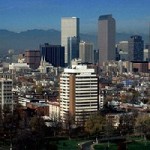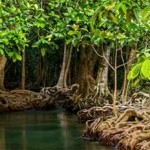 Nairobi – Deforestation deprived Kenya’s economy of 5.8 billion shillings (USD 68 million) in 2010 and 6.6 billion shillings in 2009, far outstripping the roughly 1.3 billion shillings injected from forestry and logging each year, according to a joint Kenya Forest Service (KFS) and United Nations Environment Programme (UNEP) report.
Nairobi – Deforestation deprived Kenya’s economy of 5.8 billion shillings (USD 68 million) in 2010 and 6.6 billion shillings in 2009, far outstripping the roughly 1.3 billion shillings injected from forestry and logging each year, according to a joint Kenya Forest Service (KFS) and United Nations Environment Programme (UNEP) report.
The ongoing work of the KFS, together with the Kenya National Bureau of Statistics (KNBS) and international partners, says that the contribution of forests is undervalued by 2.5 per cent, putting the estimate of its annual contribution to Gross Domestic Product (GDP) at around 3.6 per cent.
Hon. Dr. Noah Wekesa, Kenya’s Minister of Forestry and Wildlife, said the report – entitled “The Role and Contribution of Montane Forests and Related Ecosystem Services to the Kenyan Economy” and launched at the beginning of the Kenya Water Towers, Forests and Green Economy National Dialogue – marked a new phase in efforts to conserve the vital ecosystem services provided by Kenya’s forests.
“The value of the Mau Forest’s ecosystem services to the Kenyan economy previously calculated by UNEP has already catalyzed a response to conserve and rehabilitate this vital resource,” he said. “This shows we have already acknowledged the importance of forests. However, this new report quantifies the massive scale of the economic damage deforestation brings and shows much more needs to be done nation-wide.”
Kenya’s five water towers – Mau Forest Complex, Mount Kenya, the Aberdares, Mount Elgon and Cherangani – feed filtered rainwater to rivers and lakes, and provide more than 15,800 million cubic metres of water per year, which represents over 75 per cent of the country’s renewable surface water resources.
These forests store water during the rainy season and release it slowly, thus, ensuring water flow during dry periods. The forests, thus, provide resilience to seasonal environmental and economic changes, and long-term economic hazards like climate change. Aside from timber and fuel, they also bring benefits to the agriculture, forestry and fishing sectors; the electricity and water sectors; the hotels and accommodation sector; and the public administration and defense sector.
Yet between 2000 and 2010, deforestation in the water towers amounted to an estimated 28,427 hectares, leading to reduced water availability of approximately 62 million cubic metres per year. Kenya’s economy is highly vulnerable to water availability. Inflation spiked above 10 per cent on three occasions between 2000 and 2010, each time driven by drought combined with increasing crude oil prices and weaker exchange rates.
“Kenya is today underlining its determination to be among a group of pioneering countries putting its nature-based assets at the centre of its sustainable development ambitions,” said Achim Steiner, UN Under-Secretary General and UNEP Executive Director. “The findings of this report are based on the best international analytical methods and the latest environmental and economic evidence – it is these kinds of cutting-edge assessments that are inspiring more and more countries in Africa and beyond towards the opportunities presented in a transition to an inclusive Green Economy,” he added.
The main reasons for deforestation are multiple and complex: from unregulated charcoal production, logging of indigenous trees, marijuana cultivation, and cultivated fields in the indigenous forest to shamba-system practices, livestock grazing, quarry landslides and human settlements.
Fuel wood and charcoal represent the most important energy source for the population, at 75 per cent, and the forestry sector creates both formal and informal job opportunities, especially in rural areas.
As a result, deforestation has largely been driven by private consumption, as the demand of households has doubled within the last ten years. This number is also underestimated as it does not incorporate the informal sector, which has been expanding, particularly in rural areas where firewood is collected for free or exchanged for other goods.
While forest products bring in one-off cash to the national economy, they encourage illegal deforestation activities and create huge economic damage through the loss of regulating services.
The report was developed in the framework of the United Nations Collaborative Programme for Reducing Emissions from Deforestation and Forest Degradation (UN-REDD Programme). The UN-REDD Programme supports Kenya and 45 other developing countries to conserve, sustainably manage and restore their forest resources.
The report quantified the following negative economic consequences of deforestation:
- By 2010, the cumulative negative effect of deforestation on the economy through reduction in regulating services was an estimated KSh 3,650 million per year, more than four times the cash revenue of deforestation;
- Decreased river flows in dry season reduces water supply to irrigation agriculture, at a cost of 1.5 billion shillings to the sector in 2010;
- Reduced river flows also reduced hydropower generation by 12 million shillings, producing a multiplier effect on the rest of the economy through power shortages (46 per cent of Kenya’s power comes from hydro generation);
- Increased wet-season flows lead to erosion and sedimentation, resulting in a loss of productive soil resources, which in turn increases nutrient content in fresh water systems, causes siltation and increases turbidity of water supplies. This reduction in water quality reduced inland fish catch by 86 million shillings and increased the cost of water treatment for potable use by 192 million shillings in 2010;
- Incidence of malaria as a result of deforestation is estimated to have cost 237 million shillings by 2010, in the form of health costs to the government and losses in labour productivity;
- Forest loss is also detrimental to the global carbon cycle. The above-ground carbon storage value forgone through deforestation was estimated at 511 million shillings in 2010 (calculated at a value of US$6 per ton under the REDD+ scheme).
The Kenyan government has already recognized the value of its forests, and is working on the rehabilitation of the Mau Forest Complex. Over the last one-and-a-half years, more than 21,000 hectares of forestland have been repossessed, and 10,000 hectares have been rehabilitated by the Government of Kenya and partners.
A number of programmes and activities have also been started to improve the livelihoods of communities living adjacent to the forest and address the situation of the forest-dwelling communities, in particular the Ogiek.
With a view to expanding efforts to all water towers, the Government of Kenya gazetted the Kenya Water Towers Agency on 13 April 2012. The agency will take over the responsibilities of the Mau Secretariat and will be responsible for coordinating and supervising the rehabilitation, conservation and management of Kenyan water towers.














